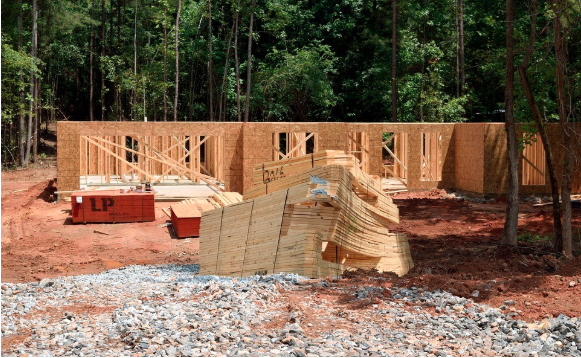Next Generation Forest Plantations: Integrating trees in rural landscapes

Adding timber trees to multi-use farmland has both environmental and economic benefits, and University of Melbourne researchers are working with landholders and investors to develop new business models for what could be the future of forest plantations in Australia.
The global demand for wood is growing. On current trends, the global area of tree plantations will need to double by 2050 to meet future demand.
In Australia, an expanding population and increasing use of wood in construction for design and environmental benefits is driving the increased demand for wood products.
To address how new plantations might be supported, researchers at the University of Melbourne are exploring new approaches for integrating tree plantations in the rural landscape.
Project Leader from the University of Melbourne School of Ecosystem and Forest Sciences Professor Rod Keenan said: “There is a large area of farmland in Australia where different types of planted forest could be integrated with existing agricultural land uses."
“Adding trees to the rural landscape could benefit agricultural production, provide environmental benefits including helping to mitigate climate change and support the restoration of forest landscapes, while also providing a future supply of timber and additional income for farmers."
The study will focus in two key regions in Victoria: Colac-Otway and Gippsland. The researchers will assess the attitudes and experience of different stakeholders and analyse past approaches to plantation investment partnerships in Australia and around the world.
This knowledge will be used to build new business investment models that can meet the needs of different investment partners.
“In the first instance, the project team would like to speak with landholders in these two regions about their views on integrating tree plantations within the rural landscape,” Professor Keenan said.
Hancock Victoria Plantations is a project partner and Chief Operating Officer Cameron MacDonald said the lack of new plantation timber will limit expansion in forest processing, leading to an increasing reliance on imported timber products.
“More investment in plantations can drive investment and innovation in timber processing and increased economic value to regional communities,” Mr McDonald said.
Midway Limited Chief Executive Officer Tony Price echoes these sentiments.
“We are keen to work with a range of landowners to identify new and innovative opportunities for increasing trees in the landscape that result in win-win outcomes for both the forest and agricultural sectors while also delivering environmental benefits such as carbon sequestration, biodiversity and water quality,” Mr Price said.
Professor Keenan said that while farm forestry has been promoted for some time, the missing element has been financial capital.
“The aim of this study is to come up with models that can link rural landowners with the finance sector and with industry," Professor Keenan said.
"That’s why we are working with business researchers from Swinburne University who will assess timber industry, finance sector and landowner requirements for investment partnerships.”
If you would like to share your experience with farm forestry or plantations please contact Professor Rod Keenan at rkeenan@unimelb.edu.au or on (03) 9035 8227.
The project is funded by the Commonwealth Government’s Voluntary Matching Program, co-funded by HVP Plantations, Midway Ltd, Australian Paper, AKD Softwoods and One Forty One Plantations Ltd with research conducted through the University of Melbourne. Forest and Wood Products Australia administer the project on behalf of the Department of Agriculture and Water.